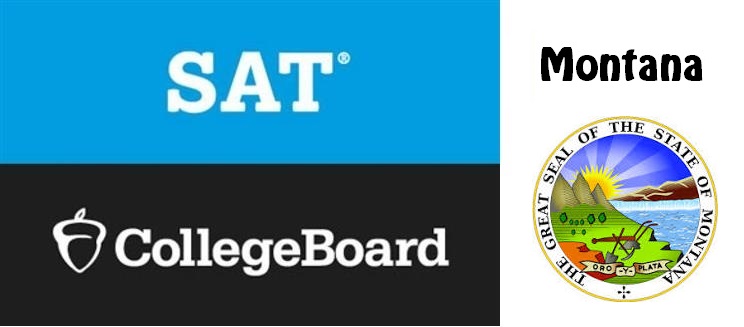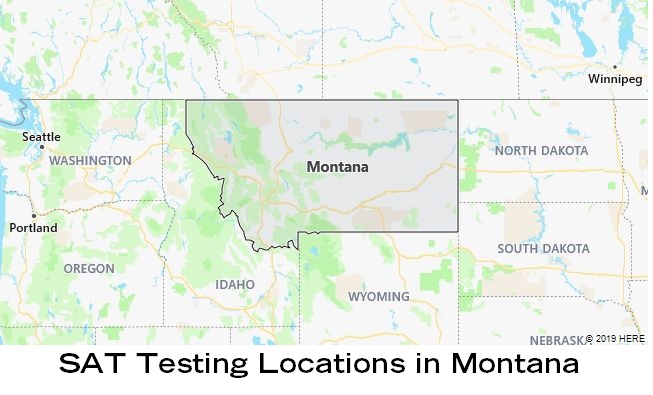According to the College Board, there are 10 test centers for SAT and SAT Subject Tests in Montana. Please note that before you register either of the SAT exams, you should choose your test date and test location. Each testing location is affiliated with an educational institution, such as high school, community college, or university. The following test centers administer one or more of SAT tests in Montana.

2019 – 2020 SAT Test Dates in Montana
- March 9, 2019
- May 4, 2019
- June 1, 2019
- August 24, 2019
- October 5, 2019
- November 2, 2019
- December 7, 2019
- March 14, 2020
- May 2, 2020
- June 6, 2020
- August 29, 2020
- October 3, 2020
- November 7, 2020
- December 5, 2020
SAT Testing Centers in Montana
CARROLL COLL
CARTER COUNTY HS
CORVALLIS HS
FLATHEAD VALLEY COMM COLL
LONE PEAK HIGH SCHOOL
MONTANA STATE U-NORTHERN
NOXON HS
SENTINEL HS
SKYVIEW HS E
WEST YELLOWSTONE SCHOOL

Montana History
For several decades after the Lewis and Clark expedition, only Christian missionaries and a few hunters were interested in Montana. The first permanent American settlement in Montana was not established until 1847. This trading post was purchased by the US Army in 1865 and Fort Benton was built on its basis (now Fort Benton is a small town in Montana).
In the early 1960s, gold was discovered in the mountains of Montana. As before in California and Colorado, a flood of gold diggers poured into Montana . Among them was John Bozeman, who scouted the route from the Oregon Trail in Wyoming to western Montana. This route was called the “Bozeman Road”, after John Bozeman was also named a city in Montana.
In 1864, the Montana Territory was formed. Following gold, deposits of silver, lead, copper, and coal were found in the future Treasure State. More and more new mines were opened, the number of immigrants to Montana grew, mining villages appeared and disappeared.
With the constantly and rapidly increasing population of Montana, relations with the Indians among the white settlers were very tense. Recovering from the Civil War, in 1876-1877 the US Army launched an offensive against the Indian tribes, known as the “Great Sioux War”.
One of the most famous battles of this war took place on June 25-26, 1876 near the Little Bighorn River in eastern Montana. The 7th Cavalry Regiment of the US Army, led by a well-known US officer, Colonel George Custer, attacked the combined forces of the Indians of the Lakota, Cheyenne and Arapaho peoples, led by a Lakota chief named Sitting Bull. The Battle of the Little Bighorn ended in the complete defeat of the American troops and the death of their commander. This battle went down in US history as “Custer’s Last Battle”.
After the defeat at the Battle of the Little Bighorn, the US Army increased the number of its soldiers in the region, and already in 1877 the resistance of the Indians in Montana was almost completely suppressed (although separate conflicts flared up for another two decades). Native Americans were either driven from the lands of Montana or concentrated on reservations.
